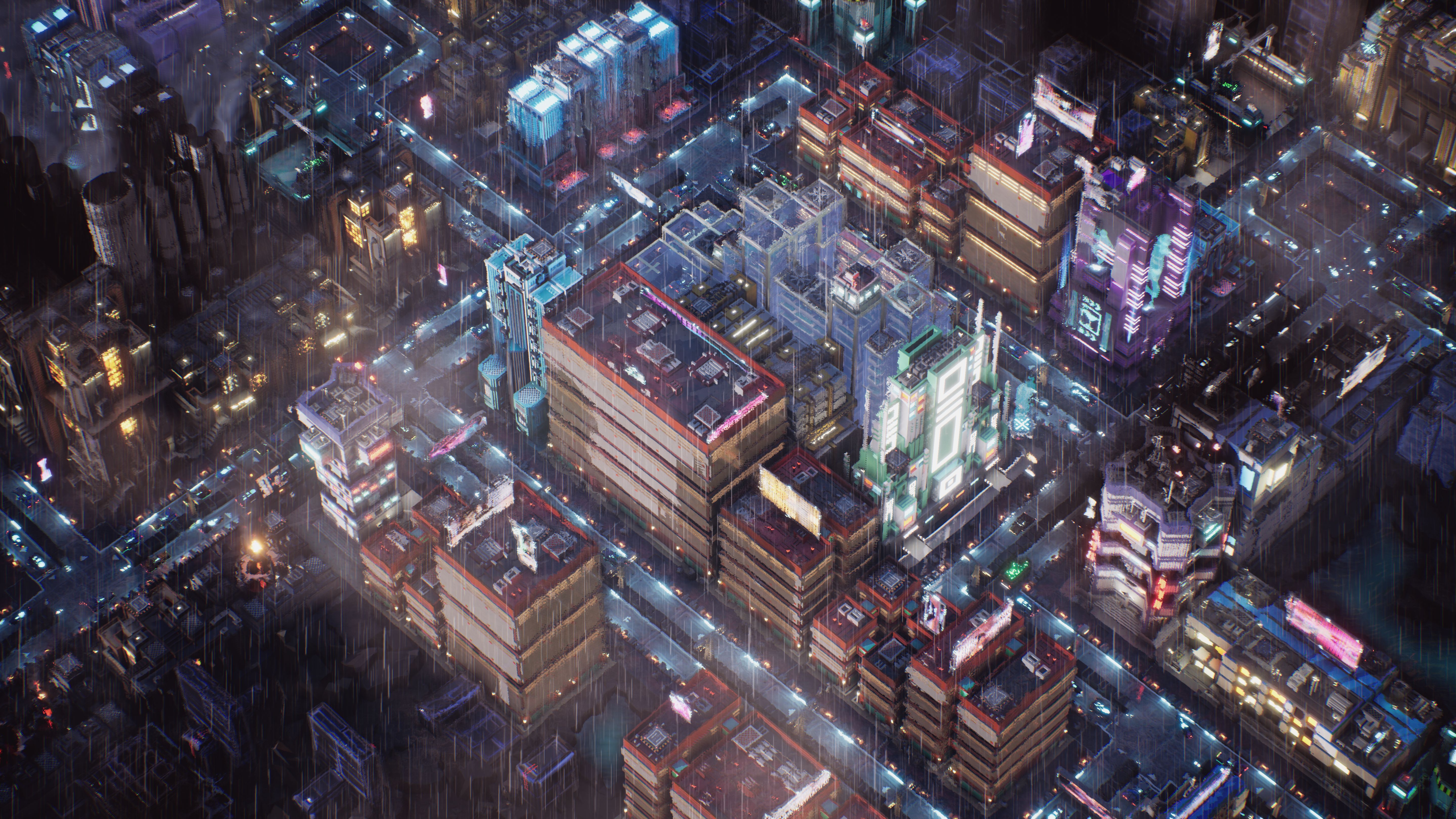Big guns and interior design are equally important in Industries of Titan
The Crypt of the Necrodancer devs are back with a game that marries FTL-like space combat with a dreary, satisfying city-builder.
Thank goodness for FTL. It’s the most immediate and apparent influence on Brace Yourself Games’ next project, Industries of Titan, a massive change in theme and scope since Crypt of the Necrodancer. The build I played at PAX West focused on Titan’s ship-to-ship combat, but instead of parading around the galaxy, you’re parading around a future dystopia where late-late capitalism allows for all out warfare between corporations, so long as they’re willing to pay the government the appropriate war bonds.
And besides having the biggest guns, it’s money and efficiency that drive the conflict in Industries of Titan. The flow of combat is almost identical to FTL. Cross sections of two ships appear on screen while little crew members man weapons and cockpits and the like, scrambling to fix the inevitable pileup of disasters. You can pause the action at any time to survey the damage, incoming or outgoing, delegating tasks to individual crew members and targets to weapons.
But how you deck out your ship is more likely to determine the outcome of a fight than purely your clever tactics. Industries of Titan differs from FTL in that each ship’s interior is completely customizable. Using a grid-based system, you’ll purchase and plant every component long before battle, from the cockpit and medbay to lasers and fuel reserves. Components can’t just go anywhere though. Your crew will need to be able to access every station and component in case they need repairs, and piling up a power generator right next to reserve batteries and fuel might not be the best idea. Weapon-targeting also works on the grid-based system, so if you’re using a large laser that hits four grids in a row, you can conceivably target several contiguous stations (or people) at once. Smart placement is sparse placement, unless you’re rich.

You’ll be able to visit the interior of every building and customize them to increase productivity.
I found out the hard way during my first fight. I placed my fuel and batteries and power generator right next to each other, a big dumb target for my opponent to haphazardly toss lasers at for the next 10 minutes. I only managed to pull through by using my small lasers to simultaneously target their lasers and the crew members firing them. By staunching the flow of hot fire coming my way and the personnel throwing it, I managed to fix my power generator before my own guns went without power and left me a sitting duck.
I built a new ship for my next battle, spacing out my sources of power and fuel by a few squares so that my opponent could only target one or two components at once. Granted, all that empty space could’ve been filled with more power and more fuel and more guns and more people—a valid strategy—but going in big like that requires a hefty sum of cash. And for your corp to have cash in the first place means taking part in capitalism’s greatest pastime: manufacturing.
Industries of Titan isn’t just a ship combat game. You can avoid ship combat altogether, I’m told, but none of the city-building is available in the build I played. To spread your influence and increase capital, you’ll need to build interconnected factories and supporting structures.

Details are scant, but just like ships, you’ll be able to visit the interior of every building and customize them to increase productivity. Imagine a small game of Infinifactory within every structure where you’ll manage a production process by moving around conveyor belts and presses and people in order to squeeze every penny out of every microsecond. It’s a nightmare scenario, but sounds like a grimly satisfying one from up top.
Keep up to date with the most important stories and the best deals, as picked by the PC Gamer team.
Industries of Titan’s ship combat may be familiar, but it’s as strategic as FTL, and the grid-based customization system points to a much deeper experience than a quick demo can communicate. How terrifying that I want to exploit the denizens of a cyberpunk dystopia for profit, and that my motive isn’t necessarily the money but the simple satisfaction of arranging guns and fuel and production lines like space furniture. We’ve yet to see or experience the bigger picture Industries of Titan is going for, but what I’ve played so far is gorgeous, relatively easy to grasp, and terribly evil and exploitative fun.
Releasing sometime in 2019, Industries of Titan is something of a dark mirror reflecting our industrial civilization. I just hope it explores where all that money and control and exploitation eventually leads.
James is stuck in an endless loop, playing the Dark Souls games on repeat until Elden Ring and Silksong set him free. He's a truffle pig for indie horror and weird FPS games too, seeking out games that actively hurt to play. Otherwise he's wandering Austin, identifying mushrooms and doodling grackles.


